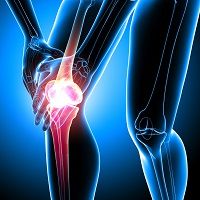Knee Osteoarthritis Linked to Neuropathy
Symptoms of neuropathy are present in patients with knee osteoarthritis, according to research from the University of Nottingham in the United Kingdom.

Knee osteoarthritis (OA) patients may experience neuropathic-like symptoms, according to a paper published in Arthritis Care & Research.
Researchers from the University of Nottingham in the United Kingdom studied patients as a subset of ongoing research at the Arthritis Research UK Pain Center. PainDETECT and S-LANSS questionnaires were used to screen for neuropathic pain.
“This study arose from our examination of assessment methods, in particular the use of questionnaires to assess the pain experience, in addition to quantitative sensory testing as a means of recoding more objectively the experience of pain,” Nadina Lincoln, PhD, the study’s corresponding author told HCPLive in an e-mail. “We have been examining the role of psychological factors in the pain experience. Patients’ emotional, cognitive, and social state can all be affected, and influence the sensation of pain. We are using both quantitative and qualitative research methods in order to advance knowledge of the pain experience in people with arthritis and to guide the development and testing of new treatments.”
The researchers surveyed 192 knee OA patients via questionnaires about aspects of their pain. An additional group of 77 knee OA patients completed the questionnaires and was also tested for quantitative sensory testing for pain pressure thresholds (PPTs). The investigators examined the relationships between the questionnaires and the measures of pain severity and/or PPTs.
The PainDETECT analysis was better for measuring the neuropathic-like symptoms, the researchers found. The S-LANSS model was not as successful, and it was less able to target specifics. Neuropathic pain was detected in 27 percent of the painDETECT patients and 30 percent in the S-LANSS group, which were based on cut-off scores of 19 and 12, respectively.
The separate group of 77 patients was displayed characteristics of low PPTs across different body areas, using the PainDETECT scale.
“The PainDETECT and S-LANSS questionnaires were both designed to screen for neuropathic pain yet there was a low level of agreement between the 2 in terms of the classification of people with neuropathic pain symptoms,” Lincoln continued. “We expected a high level of agreement as they are designed to assess the same thing.”
The authors note they are unsure of whether knee OA in fact leads to neuropathy, alterations in central pain processing lead to pain characteristics that are similar to neuropathic pain, or if some people are simply predisposed to knee OA and display neuropathic symptoms.
“Our findings indicate the painDETECT, may be used as a measure of neuropathic-like symptoms in people with OA, and reflects augmented central pain processing,” Lincoln concluded. “People with augmented pain processing had lower pain pressure thresholds. The implications for patient management have yet to be evaluated.”